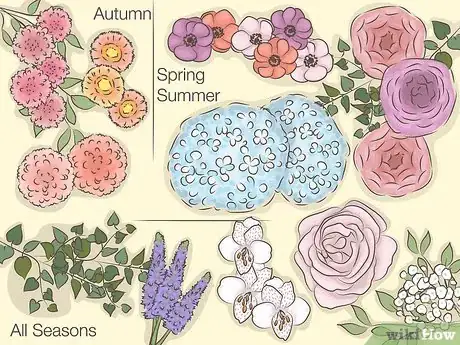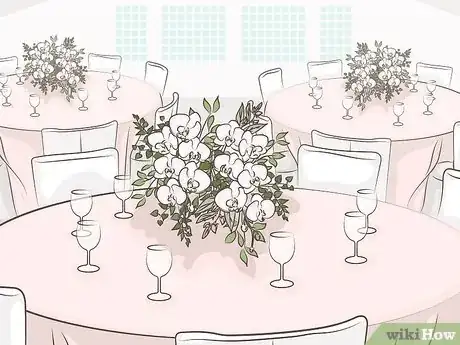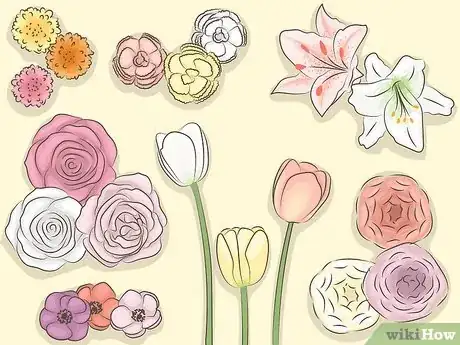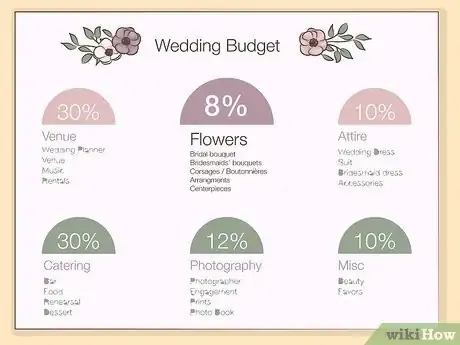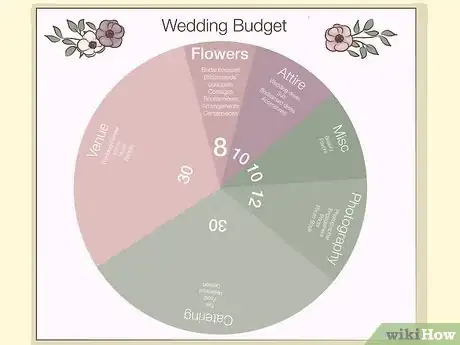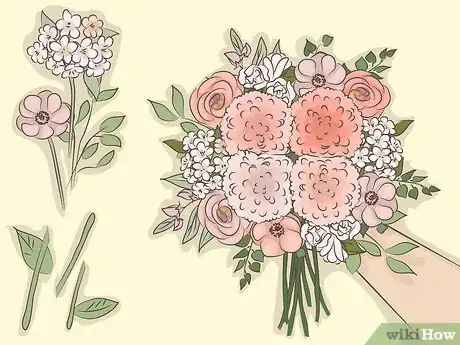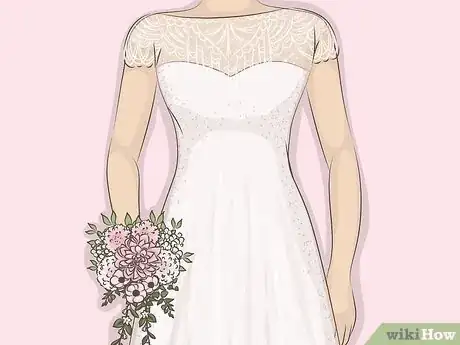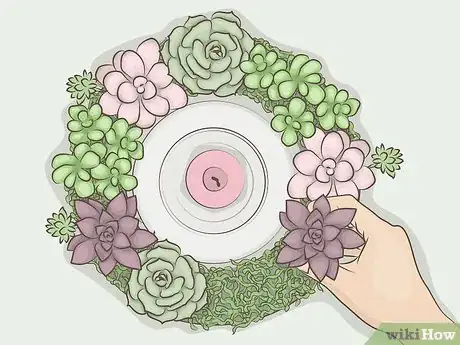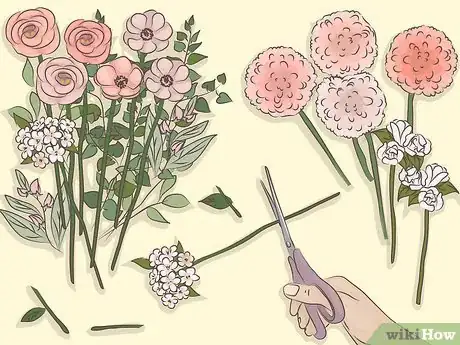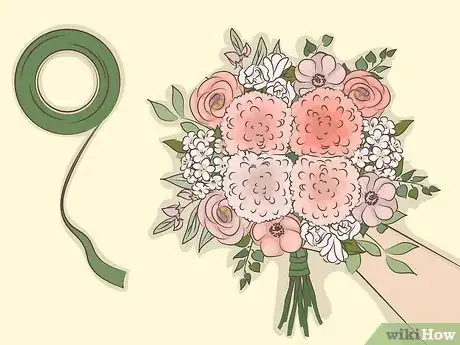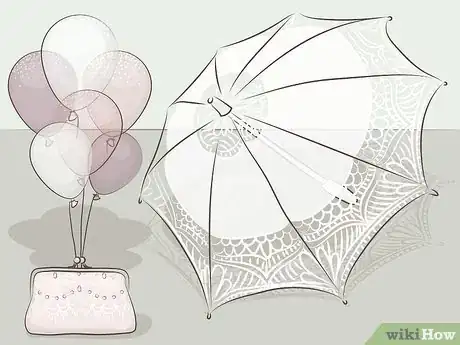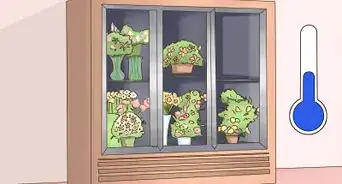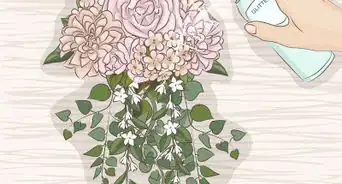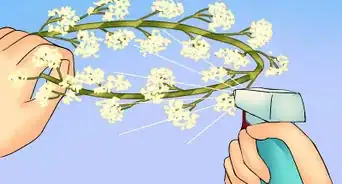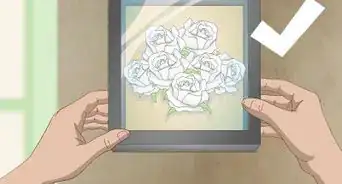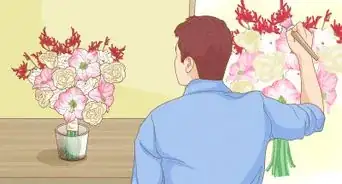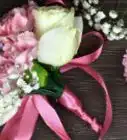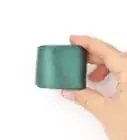This article was co-authored by Pilar Zuniga and by wikiHow staff writer, Janice Tieperman. Pilar Zuniga is a Floral Designer and the Owner of Gorgeous and Green, a floral design studio and Certified Green Business based in Oakland, California. Pilar has over ten years of experience in floral design. With a focus on being earth-friendly and supporting local growers, Gorgeous and Green has been featured in Energy Upgrade California, Molly My, Apartment Therapy, 100 Layer Cake, Design Sponge, and Trendy Bride. Her studio provides floral arrangements and gift basket, event and wedding design, and she teaches workshops on flower design and sustainability in her industry. Pilar received a BA in Anthropology from the University of California, Berkeley in 2001.
There are 18 references cited in this article, which can be found at the bottom of the page.
wikiHow marks an article as reader-approved once it receives enough positive feedback. In this case, 100% of readers who voted found the article helpful, earning it our reader-approved status.
This article has been viewed 266,945 times.
A wedding just wouldn’t be the same without flowers—but which ones are the best choice for your special day? With countless styles and combinations, it can be a challenge to narrow down your options. Not to worry! We’re here to answer all your frequently-asked questions, so you can get ready for your big day.
Steps
Build Your Bouquet
-
1Assemble the flowers in layers to build your bouquet. Form a square shape with 4 flowers—this serves as the center of the bouquet. Then, layer the additional flowers in a dome shape around the 4 central flowers.[18]
-
2Secure the bouquet with rubber bands or floral tape. Tie the stems together about 3 to 4 in (7.6 to 10.2 cm) beneath the flower blossoms. Then, slide additional rubber bands or tape down the rest of the bouquet, so the flowers stay in place. For a uniform look, cut off the bottoms of the stems, so they’re all 7 to 8 in (18 to 20 cm) long. Once you’re finished, tie a ribbon around the stems.[19]
Expert Q&A
Did you know you can get expert answers for this article?
Unlock expert answers by supporting wikiHow
-
QuestionWhat flowers should not be in a wedding bouquet?
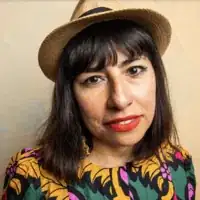 Pilar ZunigaPilar Zuniga is a Floral Designer and the Owner of Gorgeous and Green, a floral design studio and Certified Green Business based in Oakland, California. Pilar has over ten years of experience in floral design. With a focus on being earth-friendly and supporting local growers, Gorgeous and Green has been featured in Energy Upgrade California, Molly My, Apartment Therapy, 100 Layer Cake, Design Sponge, and Trendy Bride. Her studio provides floral arrangements and gift basket, event and wedding design, and she teaches workshops on flower design and sustainability in her industry. Pilar received a BA in Anthropology from the University of California, Berkeley in 2001.
Pilar ZunigaPilar Zuniga is a Floral Designer and the Owner of Gorgeous and Green, a floral design studio and Certified Green Business based in Oakland, California. Pilar has over ten years of experience in floral design. With a focus on being earth-friendly and supporting local growers, Gorgeous and Green has been featured in Energy Upgrade California, Molly My, Apartment Therapy, 100 Layer Cake, Design Sponge, and Trendy Bride. Her studio provides floral arrangements and gift basket, event and wedding design, and she teaches workshops on flower design and sustainability in her industry. Pilar received a BA in Anthropology from the University of California, Berkeley in 2001.
Floral Designer & Owner, Gorgeous and Green This can be a very philosophical question. Some people are very in tune to the different meanings of flowers.You can think about the bouquet in terms of simply color and texture, but there are historical meanings to certain flowers. I'm all for going for what appeals to you and what makes you feel good, but consider doing some research on the flowers you are considering to find out more information on their meaning and cultural significance.
This can be a very philosophical question. Some people are very in tune to the different meanings of flowers.You can think about the bouquet in terms of simply color and texture, but there are historical meanings to certain flowers. I'm all for going for what appeals to you and what makes you feel good, but consider doing some research on the flowers you are considering to find out more information on their meaning and cultural significance. -
QuestionWhat flowers can I use for a bridal bouquet with a lavender and black theme?
 Community AnswerYou can begin building your bouquet with lavenders. Black roses are a bit gothic and might not work well for a wedding, so look for a more cheerful alternative. You might want to go with black Calla Lilies (extremely gorgeous with a rare style) or black Dahlias (very beautiful, but the color is actually very dark brown). You can ask a florist to further dye these to a color that suits your taste.
Community AnswerYou can begin building your bouquet with lavenders. Black roses are a bit gothic and might not work well for a wedding, so look for a more cheerful alternative. You might want to go with black Calla Lilies (extremely gorgeous with a rare style) or black Dahlias (very beautiful, but the color is actually very dark brown). You can ask a florist to further dye these to a color that suits your taste. -
QuestionShould the mother's and bride's bouquets look the same?
 Community AnswerThey can look similar, but not the same, as the bride should be unique.
Community AnswerThey can look similar, but not the same, as the bride should be unique.
Warnings
- Check with your friends, relatives, and wedding party to see if they have a pollen allergy. Some flowers, like sunflowers, have more pollen, and may trigger a reaction.[25]⧼thumbs_response⧽
References
- ↑ https://www.bridemagazine.co.uk/articles/how-to-choose-the-perfect-wedding-bouquet
- ↑ https://www.bobvila.com/slideshow/20-bold-and-beautiful-flowers-that-bloom-in-fall-52344
- ↑ https://www.hitched.co.uk/wedding-planning/flowers/winter-wedding-flowers/
- ↑ https://www.weddingwire.com/wedding-ideas/top-spring-wedding-flowers
- ↑ https://www.weddingwire.com/wedding-ideas/florists-reveal-the-hottest-summer-wedding-flowers
- ↑ https://www.theknot.com/content/our-top-wedding-flowers-tips
- ↑ https://www.weddingwire.com/wedding-ideas/how-to-choose-your-wedding-flowers
- ↑ https://www.theknot.com/content/symbolic-wedding-flower-meanings
- ↑ https://www.goodhousekeeping.com/holidays/valentines-day-ideas/g1352/rose-color-meanings/
- ↑ https://www.weddingwire.com/wedding-ideas/how-to-choose-your-wedding-flowers
- ↑ https://www.theknot.com/content/wedding-color-inspiration-boards
- ↑ https://www.theknot.com/content/white-wedding-flowers
- ↑ https://www.theknot.com/content/how-much-should-i-budget-for-wedding-flowers
- ↑ https://www.bridemagazine.co.uk/articles/how-to-choose-the-perfect-wedding-bouquet
- ↑ https://www.bridemagazine.co.uk/articles/how-to-choose-the-perfect-wedding-bouquet
- ↑ https://www.cosmopolitan.com/lifestyle/a9261300/diy-wedding-flowers-tips-ideas/
- ↑ https://www.theknot.com/content/homemade-bouquets-basics
- ↑ https://www.theknot.com/content/homemade-bouquets-basics
- ↑ https://www.theknot.com/content/homemade-bouquets-basics
- ↑ https://www.bridalguide.com/planning/the-details/decor-flowers/wedding-bouquet-alternatives#160666
- ↑ https://www.theknot.com/content/wedding-bouquet-alternatives
- ↑ https://www.theknot.com/content/our-top-wedding-flowers-tips
- ↑ https://www.theknot.com/content/homemade-bouquets-basics
- ↑ Pilar Zuniga. Floral Designer & Owner, Gorgeous and Green. Expert Interview. 12 March 2020.
- ↑ https://www.mywedding.com/wedding-ideas/flowers-bouquets/fragrant-flowers-high-pollen-flowers-to-avoid-for-your-wedding/
